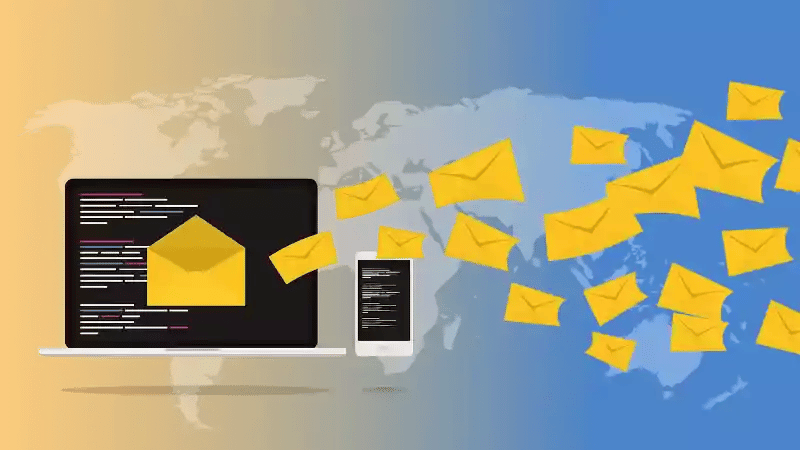Email blasts may be one of the most contentious marketing puzzle pieces. Some swear by their effectiveness--but others deride their spammy nature and low engagement numbers. So, who's right?


Then some will tell you that email is a dying medium and not to bother.
First things first, let’s nip that pernicious myth in the bud. Email is by no means a dying technology, not even close. There are 4.25 billion active email users worldwide, and over the last four years, daily email traffic has increased by 5% yearly.
OK, so email is here to stay. What does this mean for the title question: To blast or not to blast? Would you hate us if we said, "It depends?" Let's see what the right Email Marketing approach is.
Here's our easy-to-follow, three-step process to determine if email blasts are viable for you and your unique marketing situation. Look at your current campaigns and those in development. Run them through these steps. Then, once you've gone through all the steps, you can decide whether an email blast will help you reach your marketing plan and goals.
Step 1: What is an Email Blast, anyway?
Isn't it just a group email? What's so controversial about that? Yes and no, and we're getting to that. According to industry leader Hubspot, an email blast is defined as:
“...a generic email message sent to a huge list of unsegmented recipients. A poster child of the spray-and-pray marketing approach, email blasts are usually considered spam.”
The keywords there are "generic” and "unsegmented." Ever wonder why that company you bought that widget from years ago is still emailing you about their other, utterly unrelated product? Because they're engaging in mass email marketing and email blasting that message to their entire database of contacts, regardless of its relevancy to any particular person or segment of their overall audience.
Compare and contrast that with a curated email campaign with personalized versions of that message. So the new product is only advertised to people who bought the last version of that same product. Some marketers will say this is the same thing, fundamentally. We wholeheartedly disagree. Carefully personalized emails have higher engagement rates, and group emails sent to smaller, carefully segmented lists are also less likely to trigger automatic spam filters.
Each method can have a place in a well-rounded modern marketing campaign; next up, we look at pros and cons to help you decide if your campaign can benefit from a blast.
Step 2: Consider the Pros of an Email Blast
First and foremost, on the pro side of the ledger is reach. How large is your complete contact list? That’s the potential reach of an email blast. For some company updates, that is truly the best option.
Have a new feature you want to be sure everyone knows about? Blast it.
Email blasts are also fantastic ways to collect user feedback, just send a poll or survey to everyone, and collect a cross-sectional sample of responses to do a pulse check on your user base. Consider this option for in-house research projects or gathering data for a whitepaper. These use cases benefit from an unsegmented view, and there's no better way to get that than a wide-scale blast.
Step 3: Consider the Cons of that same Email Blast
Remember that your customers are not a monolithic pillar of sameness. You have different products and services, and the users of each likely vary as much or more so than those offerings. There will be a cross-over, sure, but the user base of each product should be considered its unique segment.
Up to 85% of email is considered spam these days. That means the more unwanted, unrequested, or inappropriate emails a person receives from you, the more likely they are to disengage or just mark it as spam and move on. Each time someone does this, your sender's reputation is affected. Sender reputation is a collection of metrics ISPs and email providers use to determine which senders to allow, which to send to spam, or, worse, to blacklist entirely.
Chances are your contact list has some non-customers. Investors, partner organizations, or vendors don't need to hear about the latest upgrade to your offerings. And with the volume of emails they are likely to see on any given day means they might take offense at receiving such unwanted noise in their inbox.
The surveys and polls mentioned above? Consider how different the response rates might be if you send slightly different versions to each segment of your list. Personalized messages universally see higher open rates, which can greatly improve your sender's reputation.
Bonus Step 4: Blast Best Practices
After you go through the above three steps, you may decide that the judicious use of email blasts makes sense for your current campaign. Cool. Do us a favor? Follow some best practices. These ensure you don’t suffer any negative consequences (like a lowered sender rep) and can even help improve your results.
-
Keep each message short and to the point
-
Be sure your subject line matches the content that follows
-
Get to that content quick
-
Include an above-the-fold CTA
-
Make sure your unsubscribe option is clear and easy to find
-
Ensure your website and email formatting is mobile-friendly; over half of all emails are read on mobile devices.
Does our slightly sarcastic "it depends" answer make more sense now? There are times and places where a well-planned email blast can do wonders for your campaigns, providing the kick-start needed to get a campaign up and running fully.
And there are times and places where even the most well-thought-out and best-intentioned blast can do nothing but turn off your customers and sour your sender's reputation for future email campaigns.
Ultimately, it has to be your call. We hope this article gave you food for thought and helps you make an informed decision when it comes time to answer the question—"to blast or not to blast."

Leave a Comment